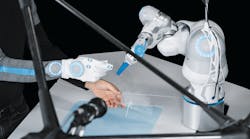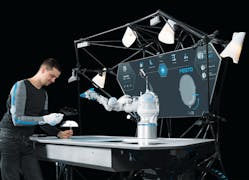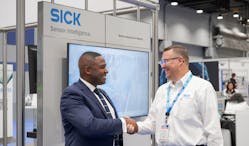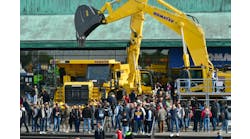Like many industries, manufacturing continues to evolve as new technologies enter the market. Automation in various forms — such as robotics and automated systems — for instance, are becoming more common to help improve efficiency and productivity as well as overcome labor challenges.
In September 2022, the American Society of Mechanical Engineers (ASME) and Autodesk, Inc. released results from their research project on the "Future of Manufacturing." Their goal was to provide industry and academic guidance for advanced manufacturing stated ASME in a press release announcing the release of the study's results.
The two organizations conducted a research study from August 2021 to May 2022 during which ASME said in its press release they investigated and identified the future workflows and skills needed for mechanical engineering, manufacturing engineering, and machinist roles over the next decade as those roles converge and evolve.
Per the report and survey findings, manufacturing is on a clear path toward Industry 4.0 — also referred to as the Fourth Industrial Revolution, the term is used to denote the use of connectivity, automation and other technologies to advance the industry. With Industry 4.0 there will be new opportunities for productivity and efficiency improvements to meet increased demand for products delivered in a short period of time.
WATCH MORE: Condition Monitoring in the Age of Industry 4.0
Technologies Entering the Market
The report notes several emerging technologies which are entering the market and aiding the transition to Industry 4.0. These include:
- Design for manufacturing (DfM)
- Operations technology (OT) infrastructure
- Artificial Intelligence (AI)/Machine Learning (ML)-driven technologies like generative design
- Cloud-based software platforms like integrated computer-aided design and manufacturing (CAD/CAM)
- Project lifecycle management (PLM)
- Manufacturing execution systems (MES)
- Business intelligence (BI) solutions
- Centralized data management for collaboration and data analysis
Through use of these various technologies, manufacturers will be able to improve workflows. In the ASME and Autodesk report it is stated that currently many workflows are disjointed and siloed which brings about more rework and other inefficiencies.
The report goes on to say that rethinking the way the industry works by using more of a systems-level approach for data collection, analysis and sharing as well as use of the above technologies can bring many benefits. Rework can be reduced and possibly even eliminated, more proactive maintenance can be done to reduce unplanned downtime...all of which can lead to improved efficiency.
This will benefit operational costs for manufacturers as well as their ability to meet delivery times for customers and improve supply chains.
Impacts to the Workforce
But with this transition also comes the need to train workers. Industry perspectives included in the ASME and Autodesk report indicate there is currently a large skills gap which is expected to widen as Industry 4.0 progresses.
"We really had to ask ourselves and the field, what is next? What are the jobs of the future and the skills needed for those jobs? And most importantly, how and who do we train for the positions that don’t exist yet?” said Ashley Huderson, Ph.D., ASME’s director of engineering education and outreach, and a leader of the research team, in the association's press release.
The consensus laid out in the report is the need for a shared commitment from both the manufacturing industry and academia to provide the skills training necessary for the future manufacturing workforce.
According to the report, the traditional roles of mechanical and manufacturing engineers and those of CNC machinists will change. Among these will be the need for increased knowledge of AI and ML systems, data analysis and simulation tools as well as understanding how to optimize processes. There will also need to be a greater emphasis on interdisciplinary skills due to increased collaboration between these engineers and machinists.
Unfortunately, the report points out that the educational system has not kept up with the change in manufacturing. To help overcome this, the report said a systems-level redesign perspective for educating future manufacturing and engineering talent. Among the key objectives of this redesign will be reducing the time it takes to educate future employees. Advanced degrees will still be necessary but there also needs to be a quicker process for educating manufacturing talent to aid the workforce challenges facing the industry.
There are of course many initiatives taking place to help overcome this skills gap. For instance, Festo Didactic recently announced it worked with SICK to create a curriculum for robot safety. Use of robotics is growing in manufacturing and other industries to help automate some processes. Knowing how to safely work with them is just as critical as with any other machines in a manufacturing facility.
The Safety Awareness Training Package created by Festo and SICK combines the educational content and hardware necessary to provide appropriate safety training. The curriculum places a focus on robot risk assessments and implementation of a system approach versus automation a la carte it was stated in a joint press release from the companies about the training program.
Hardware used for the training provided by Festo and SICK includes:
- manufacturing production system (MPS),
- simulated Cyber-Physical Smart Factory with six-axis robot,
- area scanners,
- safety PLC and
- safety relay.
According to the joint press release, previous robotics education has been brand specific and focused on robot operation. However, the companies' goal is to provide a well-rounded working knowledge of robots and their use in manufacturing. The curriculum is also robot agnostic so it can be adapted to any working environment or robot brand.
"Festo and SICK have created this content to be agnostic, which means it will align to the best practice of any robot manufacturer, allowing students to become adaptable contributors from day one on the job," said Ted Rozier, Director of Engineering at Festo Didactic North America, in the companies' press release.
READ MORE of our workforce development related content:
How do We Shape the Future Workforce?
AEM Partners with Project MFG for Workforce Development
Manufacturing Day 2022: Workforce Initiatives More Important than Ever
We want to hear from you!
What future technologies are you seeing entering the manufacturing industry? What skills do you think current and future manufacturing employees will need to succeed? What initiatives are you seeing to aid with skills development?
Let us know! Email me at [email protected] or reach out to us on social media.
Twitter: @TechnlgyEditor or @PowerMotionTech
LinkedIn: @PowerMotionTech




